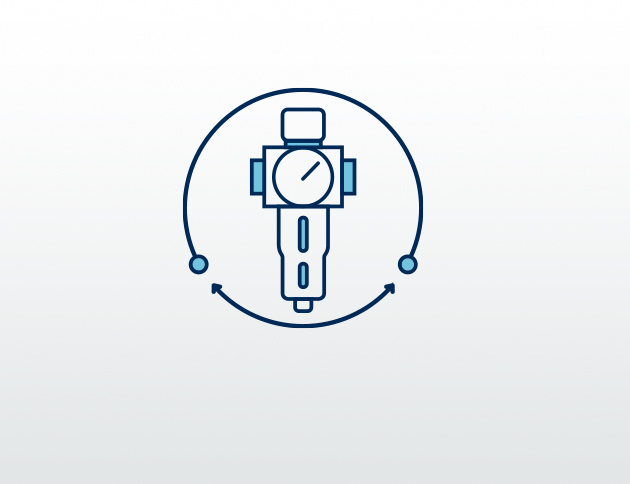Pneumatics
Pneumatics technology utilizes compressed gas to generate mechanical motion.
In pneumatic systems, air is directed to the required point through valves, in the form of compressed air. The stored energy in the compressed air is then converted into kinetic energy, enabling controlled movements, such as the displacement of a piston in a cylinder.
But what are the advantages of pneumatics that make this technology so important within the industry?
Firstly, the use of air as the "material" in pneumatic systems is ecological. It is cost-effective, and readily available everywhere. Its ease of use and the ability to transport it over long distances make it a convenient choice for various applications. Additionally, pneumatic technology offers benefits such as temperature resistance, increased safety, fast operation, and adjustable power. These benefits ensure efficient and reliable solutions for a wide range of industrial applications.
Pneumatic technology is widely used in industrial plants due to its many benefits, such as eco-friendliness, cost-effectiveness, safety, flexibility, and efficiency. These benefits make it an ideal choice for optimizing industrial processes, improving productivity, and ensuring a safer working environment.
Lubrication
In mechanics, friction can be classified into two types: rolling and sliding.
In the first case, let's consider a bearing as an example. There are rolling elements, such as balls or rollers, that rotate inside two rings and, in most cases, are guided by cages made of various materials like polyamides, such as steel, or bronze. In the second case, we can take the example of two metal components sliding against each other. In both cases, the application of grease or oil lubrication ensures a continuous lubricating film between the frictional surfaces, preventing premature failure of the components.
By using an effective lubrication system, companies gain significant economic advantages in terms of reduced machine downtime and lower expenses on new spare parts due to the lubricated component having a much longer lifespan.
+ Read more


